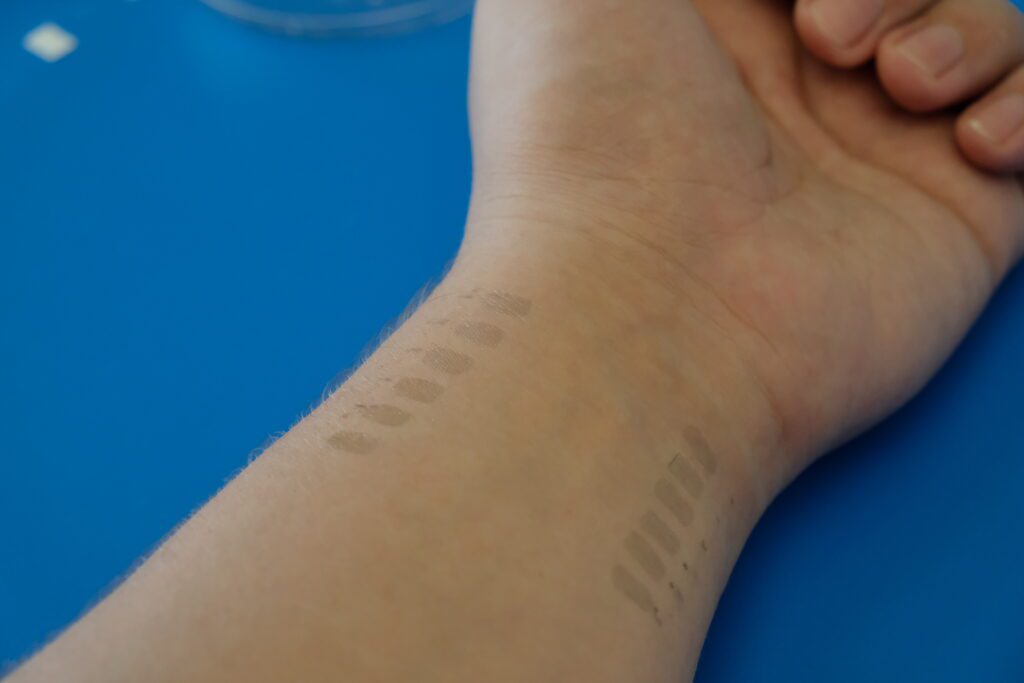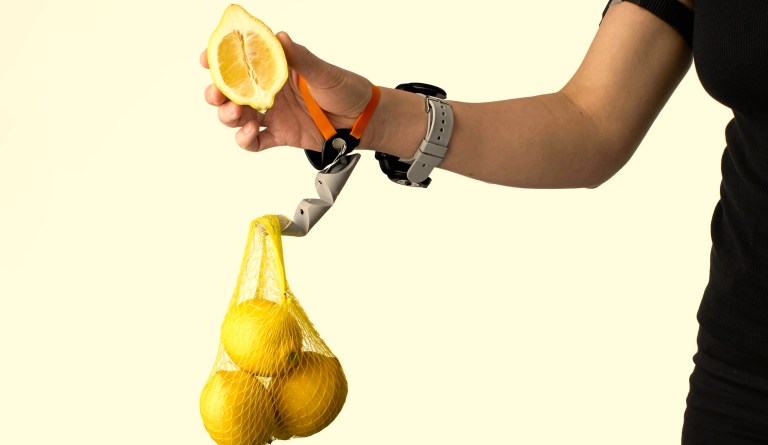Blood pressure is one of medicine’s most important measurements, not just as a diagnostic tool to predict cardiovascular disease and stroke risk, but also to monitor issues like kidney disease and diabetes. Inside the doctor’s office, restrictive blow-up arm cuffs do the job fine, but in more natural settings, measuring blood pressure is tricky. Fitbits and smartphones that use newer technology to track heart rate are not equipped to take blood pressure readings, as they often move around and rely on light sensors that don’t respond with the same accuracy on all skin tones.
But now, researchers at the University of Texas at Austin and Texas A&M University have developed an ultra-thin, temporary tattoo that can be used to accurately monitor blood pressure for 300 minutes.
In a news release from the University of Texas at Austin, Roozbeh Jafari, a professor of biomedical engineering, computer science, and electrical engineering at Texas A&M and co-leader of the project, refers to cuff-less blood pressure technology as the “holy grail.”
The e-tattoo he and his team developed can provide continuous monitoring as wearers nap, exercise, and experience moments of stress. “The sensor for the tattoo is weightless and unobtrusive. You place it there. You don’t even see it, and it doesn’t move,” he said.
Applied exactly the same way as a temporary tattoo from your favorite flavor of Fruit Stripe gum (remember those?), the waterproof e-tattoos can be worn for up to 24 hours. They’re made with graphene, similar to the graphite used in pencils and one of the strongest and thinnest materials in existence. The tattoo takes its measurements by shooting electrical currents into the skin and analyzing the body’s response through changes in blood volume, a technology called bioimpedance.
Tattoo wearers must be hooked up to a circuit board to provide the reading to medical professionals, but that could change in the future as researchers hope to refine the technology for use in smartphones and watches.
This isn’t the first e-tattoo developed to monitor and relay health information. Earlier examples of biosensor technology include a tattoo that measures lactate levels in sweat to alert athletes when they should ease back their physical exertion, one that records electrical signals in the muscles to help diagnose neuromuscular diseases, and one that detects glucose levels in people living with diabetes.
The blood pressure tattoo was developed with funding from the Office of Naval Research, National Science Foundation, and National Institutes of Health. The findings were published in Nature Nanotechnology this June.
“Besides their importance in medical diagnosis, ambulatory BP monitoring platforms can advance disease correlation with individual behavior, daily habits and lifestyle, potentially enabling analysis of root causes, prognosis, and disease prevention,” the researchers wrote.
RELATED: New Stamp-Sized Ultrasound Sticker Images Internal Organs, Could Stand in for Bulky Machines











